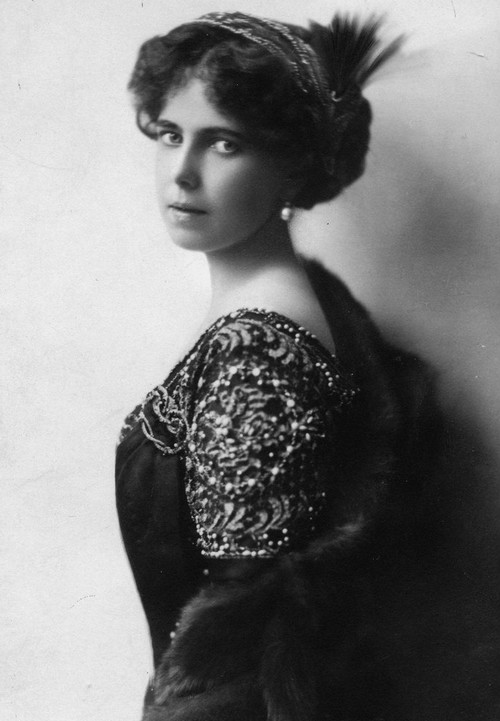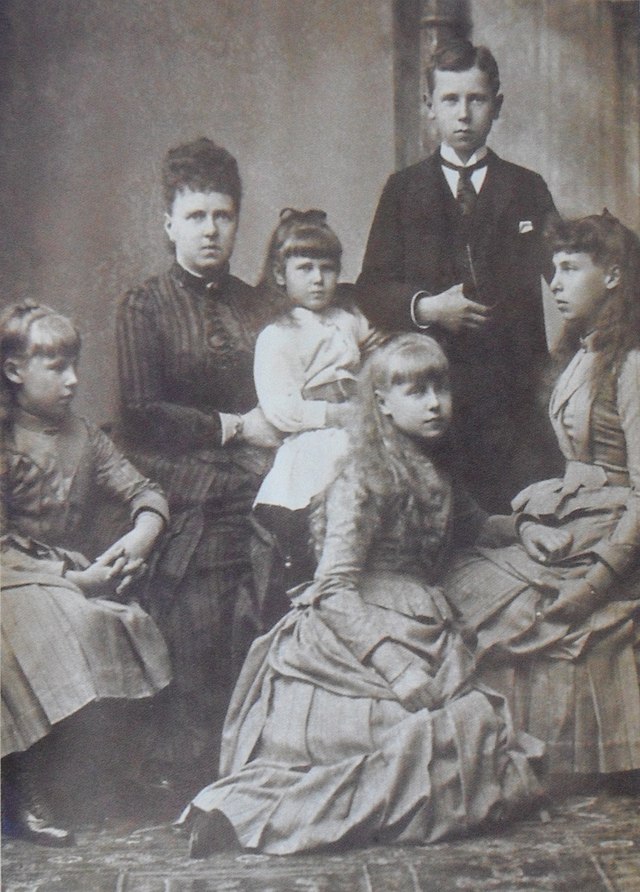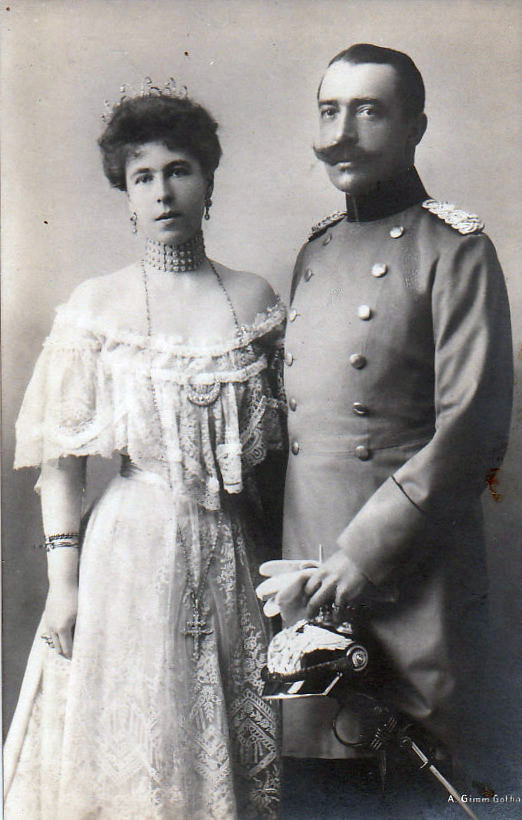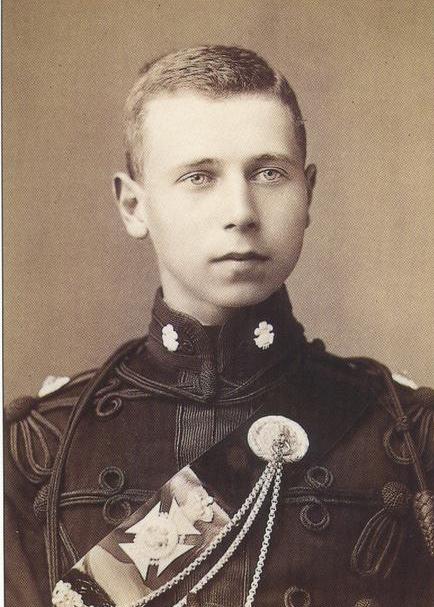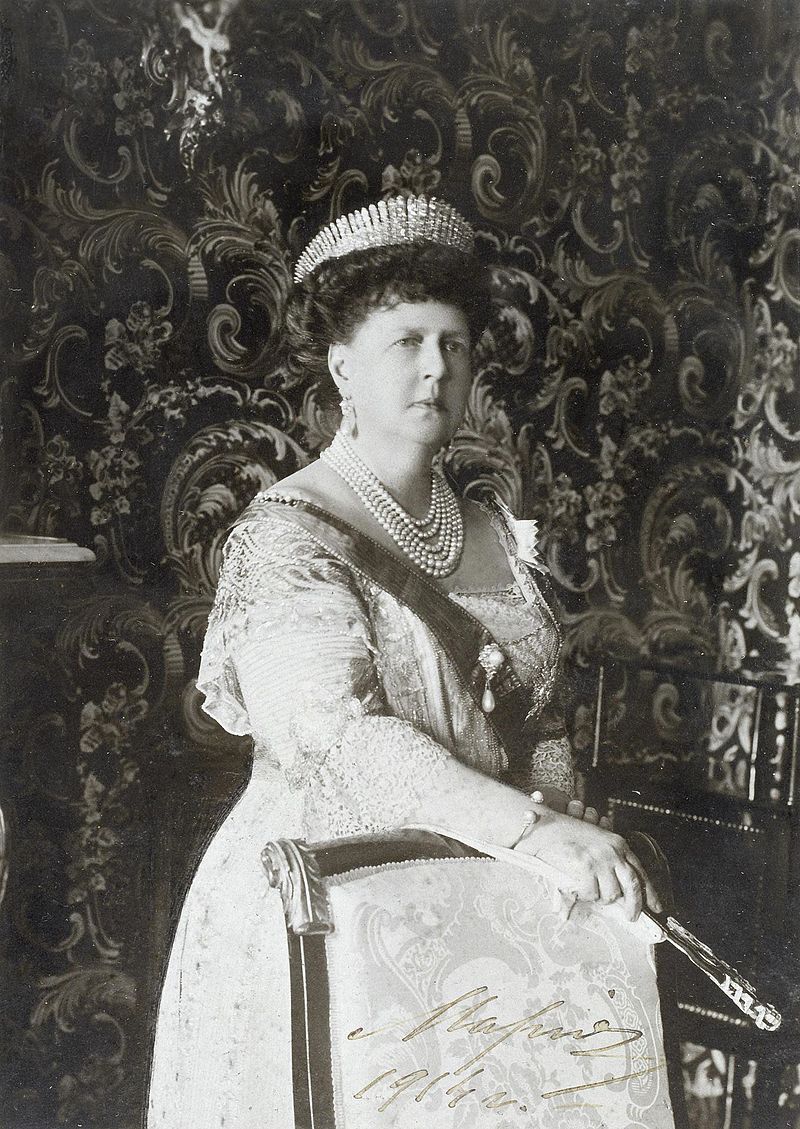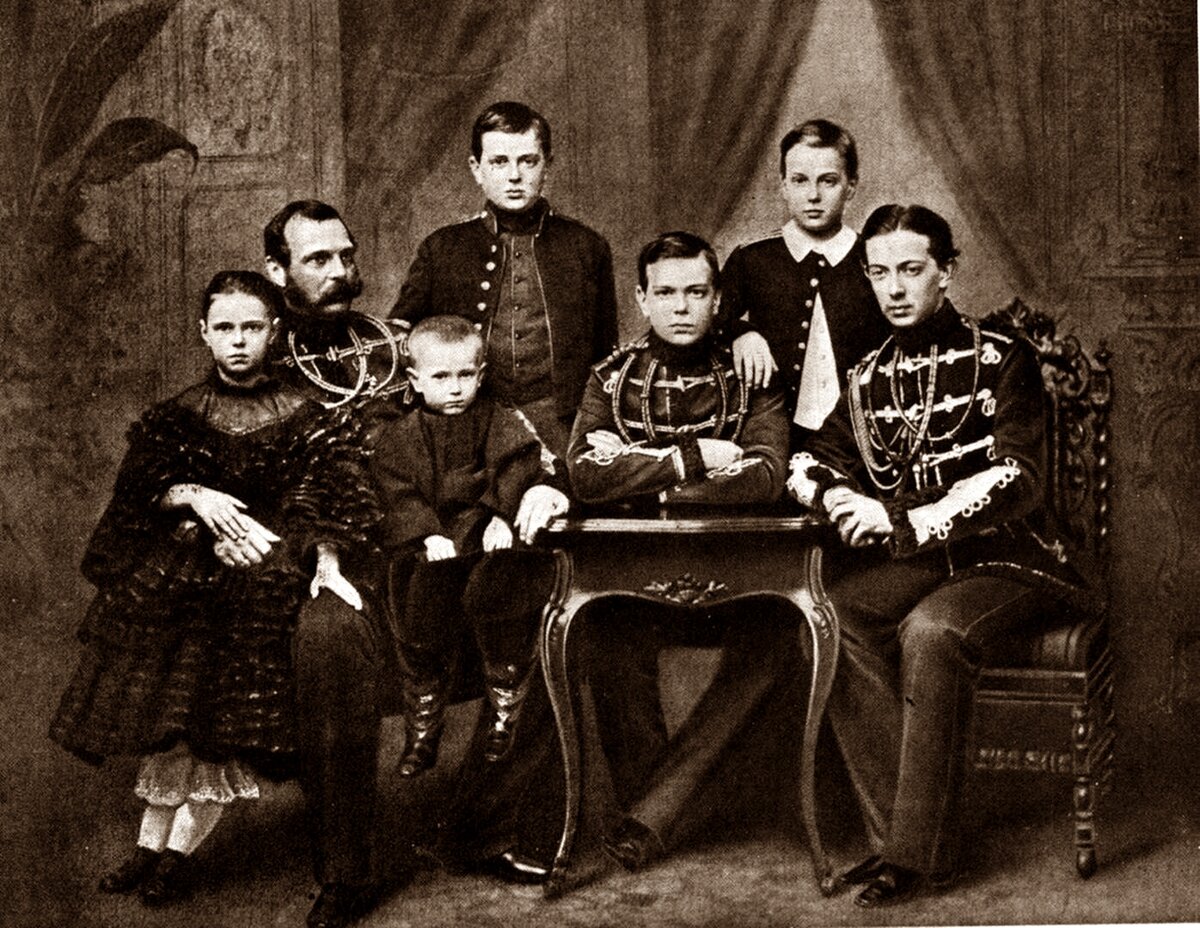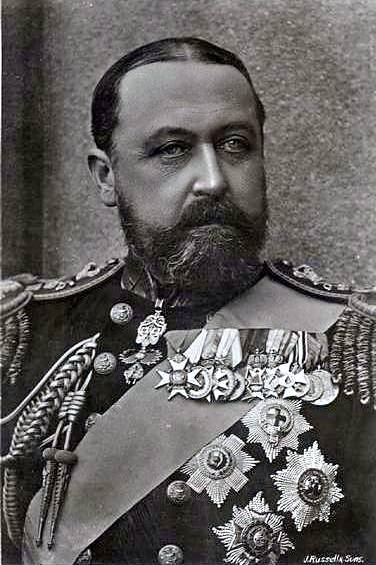by Susan Flantzer © Unofficial Royalty 2015
Saxe-Coburg-Saalfeld/Saxe-Coburg and Gotha: In 1675, Ernst I, Duke of Saxe-Gotha-Altenburg died. Initially, his seven sons collectively governed the Duchy of Saxe-Gotha-Altenburg, as set out in their father’s will. In 1680, the seven brothers concluded a treaty of separation, with each brother getting a portion of the Duchy of Saxe-Gotha Altenburg and becoming a Duke. One of the seven new duchies was the Duchy of Saxe-Saalfeld and Johann Ernst, one of the seven sons of Ernst I, Duke of Saxe-Gotha-Altenburg became the first Duke of Saxe-Saalfeld. When two of his brothers died without male heirs, Johann Ernst took possession of Coburg (in 1699) and Römhild (in 1714). In 1699, Johann Ernst’s title changed to Duke of Saxe-Coburg-Saalfeld.
In 1825, 145 years after the initial split, another line became extinct and there was another split between three surviving duchies. Ernst III, Duke of Saxe-Coburg-Saalfeld became Ernst I, Duke of Saxe-Coburg and Gotha. For more information on the switch, see Saxe-Coburg-Saalfeld/Saxe-Coburg and Gotha Index.
On November 9, 1918, after the German Empire lost World War I, the Workers’ and Soldiers Council of Gotha, deposed the last Duke of Saxe-Coburg and Gotha, Charles Edward, a grandson of Queen Victoria. Five days later, he signed a declaration relinquishing his rights to the throne. The territory that encompassed the Duchy of Saxe-Coburg and Gotha is now in the German states of Bavaria and Thuringia.
********************

Franz Friedrich Anton, Duke of Saxe-Coburg-Saalfeld; Credit – Wikipedia
On July 15, 1750, Franz Frederick Anton, Duke of Saxe-Coburg-Saalfeld, the grandfather of both Queen Victoria and her husband Prince Albert, was born in Coburg, Duchy of Saxe-Coburg-Saalfeld, now a town in Bavaria, Germany. He was the eldest of the seven children of Ernst Friedrich, Duke of Saxe-Coburg-Saalfeld and his wife Sophia Antonia of Brunswick-Wolfenbüttel. Out of the seven children, only Franz Frederick Anton, a sister, and a brother survived childhood.
- Karl (1751-1757), died in childhood
- Friederike Juliane (born and died 1752), died in infancy
- Caroline Ulrike Amalie (1753-1829), an abbess at the secular Lutheran abbey, Gandersheim Abbey
- Ludwig Karl Friedrich (1755-1806), had an illegitimate son Ludwig Frederick Emil of Coburg (1779 – 1827) whose five children were created Freiherren (Barons) von Coburg
- Ferdinand August Heinrich (1756-1758), died in childhood
- Friedrich (born and died 1758), died in infancy
On March 6, 1775, Franz married Princess Sophie of Saxe-Hildburghausen, a daughter of Ernst Friedrich III Karl, Duke of Saxe-Hildburghausen and his third wife Princess Ernestine of Saxe-Weimar. At the time, Franz was already in love with his future wife, Countess Augusta Reuss of Ebersdorf, but he was unable to break off his engagement with Sophie. The bride was only 16 years old and died of influenza just six months after the wedding which allowed Franz to marry his beloved Augusta.

Augusta Reuss of Ebersdorf; Credit – Wikipedia
On June 13, 1777, in the bride’s hometown of Ebersdorf, County of Reuss-Ebersdrof, now in Thuingia, Germany, Franz married Augusta Reuss of Ebersdorf, the eldest daughter of Heinrich XXIV, Count Reuss of Ebersdorf and Karoline Ernestine of Erbach-Schönberg.
Franz and Augusta had nine children:
- Sophie (1778 – 1835), married Emmanuel, Count von Mensdorff-Pouilly, had six sons
- Antoinette (1779 – 1824), married Alexander of Württemberg, had four sons and one daughter
- Juliane (Grand Duchess Anna Feodorovna after marriage) (1781 – 1860), married Grand Duke Konstantin Pavlovich of Russia, no issue, marriage annulled in 1820; had two illegitimate children
- Ernst I, Duke of Saxe-Coburg-Gotha (1784 – 1844), married (1) Princess Louise of Saxe-Gotha-Altenburg, had two sons, Ernst II, Duke of Saxe-Coburg and Gotha and Prince Albert, husband of Queen Victoria; married (2) Duchess Marie of Württemberg, daughter of his sister Antoinette, no issue; had three illegitimate children
- Ferdinand (1785 – 1851), married Princess Maria Antonia Koháry, had three sons and one daughter including Ferdinand. King Consort of Portugal; was the grandfather of Tsar Ferdinand I of Bulgaria
- Victoria (1786 – 1861), married (1) Emich Carl, 2nd Prince of Leiningen, had two children (2) Prince Edward, Duke of Kent, had one child Queen Victoria
- Marianne Charlotte (1788 – 1794)
- Leopold I, King of the Belgians (1790 – 1865), married (1) Princess Charlotte of Wales, only child of George, Prince of Wales (King George IV), died in childbirth along with her son (2) Princess Louise of Orléans, had three sons and one daughter including Leopold II, King of the Belgians and Charlotte, Empress Carlota of Mexico
- Franz Maximilian Ludwig (1792 – 1793)

Franz Friedrich Anton; Credit – Wikipedia
In 1800, Franz succeeded his father as Duke of Saxe-Coburg-Saalfeld, but he ruled only for six years before his death in 1806. In 1805, due to the ailing finances, Franz was forced by his Prime Minister Theodor Konrad von Kretschmann to make a contract between the two duchies, Coburg and Saalfeld, for a uniform system of government. In 1806, with the end of the Holy Roman Empire, the Duchy regained its independence and joined the Confederation of the Rhine.
Franz was a great lover of art and books. In 1775, he began a print collection that ultimately consisted of 300,000 prints. The collection can be visited at the Veste Coburg. Because of Franz, the family’s library had an extensive collection of books. Franz conducted an extensive renovation of the family castles. Walls, ditches, and towers were demolished and replaced by gardens and other green areas. In 1805, Franz bought back Schloss Rosenau which the family had been forced to sell in 1704 due to debts.
Franz Frederick Anton died, aged 56, on December 9, 1806, in Coburg, Duchy of Saxe-Coburg-Saalfeld, now in Bavaria, Germany. He was buried in a mausoleum in the Coburg Court Garden in Coburg. Twenty-five years later, his second wife Augusta was buried next to him.

Mausoleum of Franz Friedrich Anton and Augusta; Credit – “Coburg-Hofgarten-Mausoleum” von Störfix. Lizenziert unter CC BY-SA 3.0 über Wikimedia Commons – http://commons.wikimedia.org/wiki/File:Coburg-Hofgarten-Mausoleum.jpg#/media/File:Coburg-Hofgarten-Mausoleum.jpg
This article is the intellectual property of Unofficial Royalty and is NOT TO BE COPIED, EDITED, OR POSTED IN ANY FORM ON ANOTHER WEBSITE under any circumstances. It is permissible to use a link that directs to Unofficial Royalty.
Saxe-Coburg-Saalfeld/Saxe-Coburg and Gotha Resources at Unofficial Royalty

